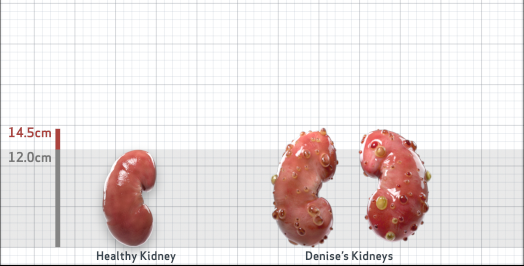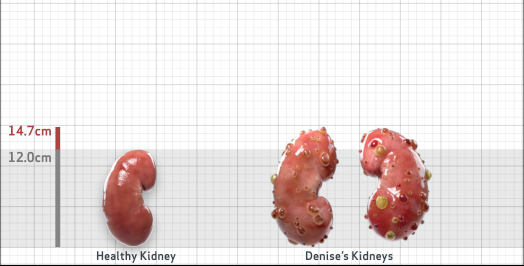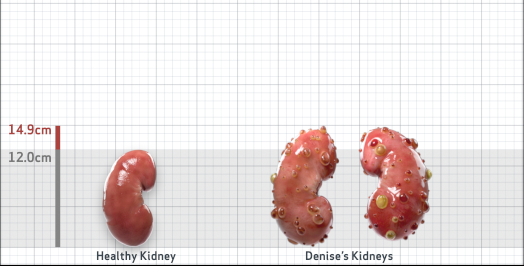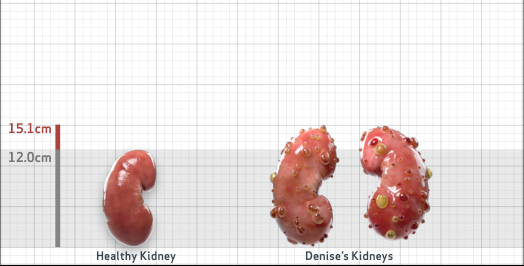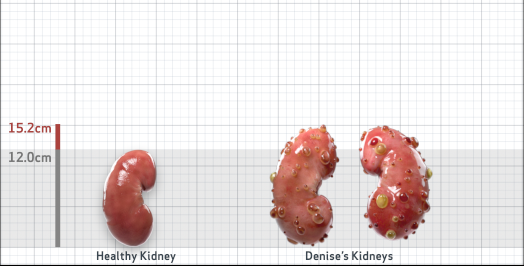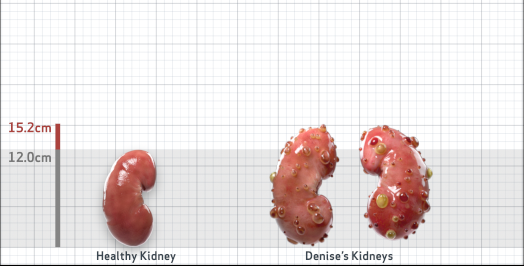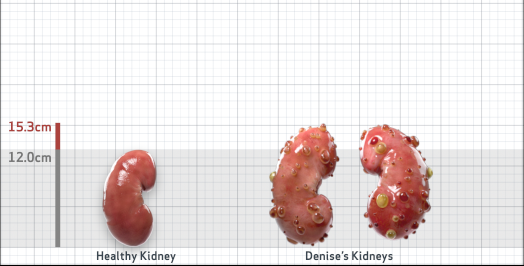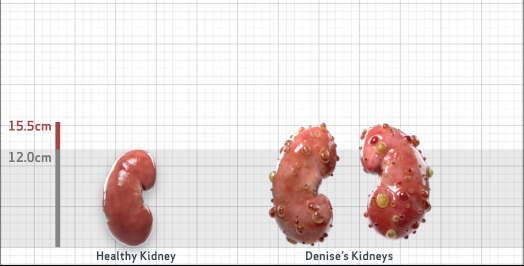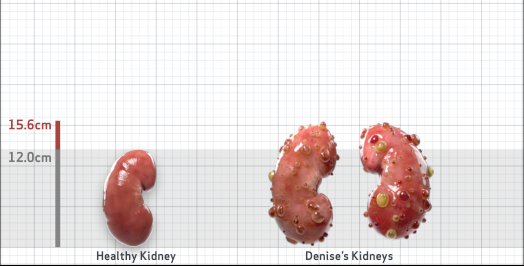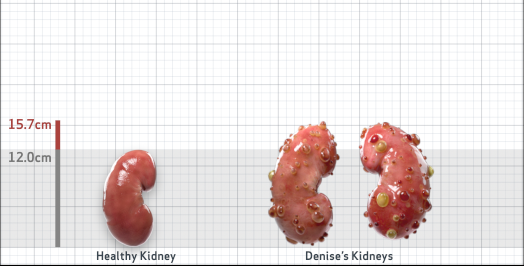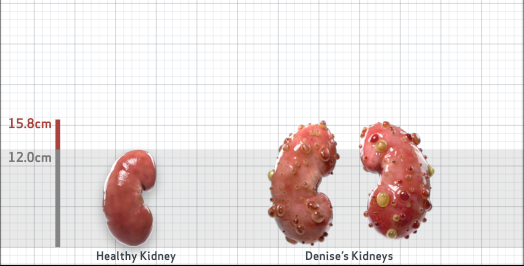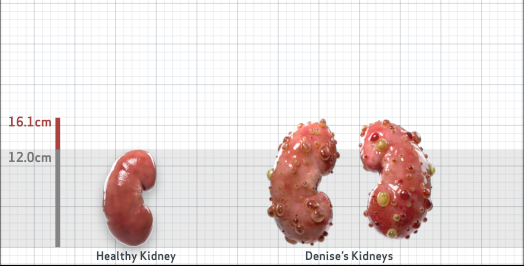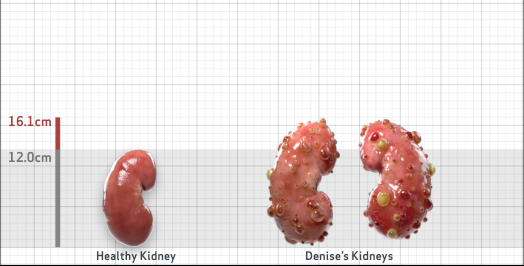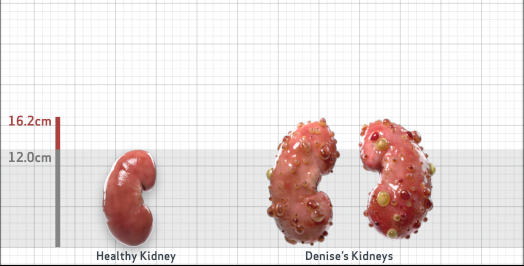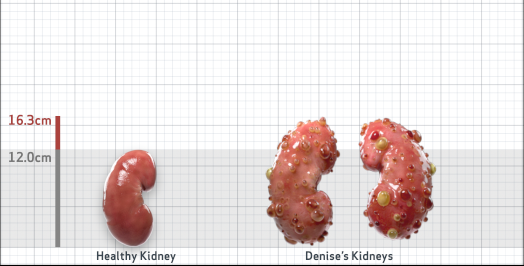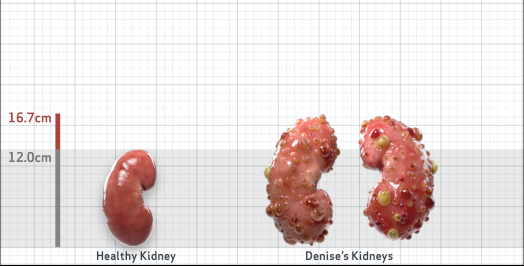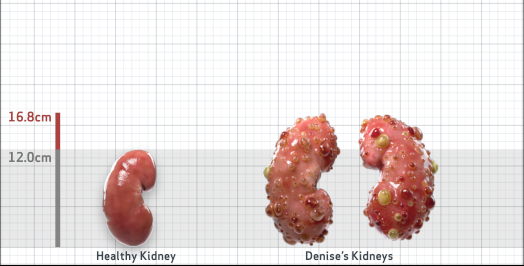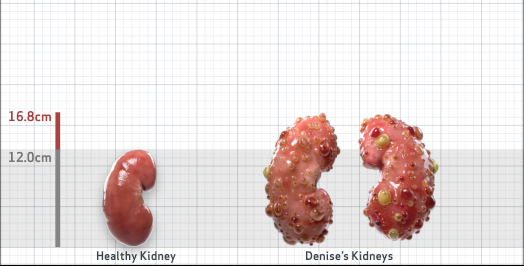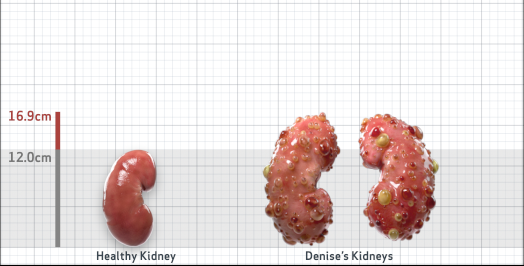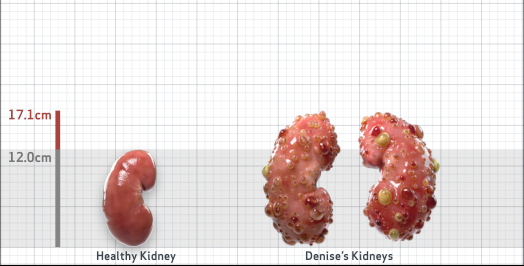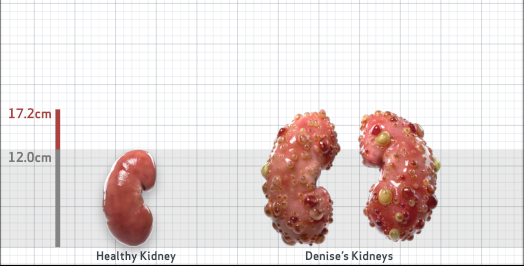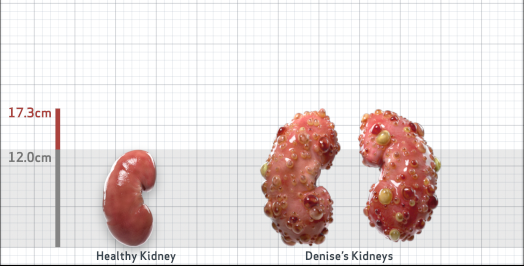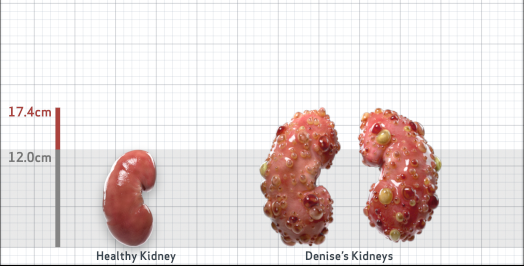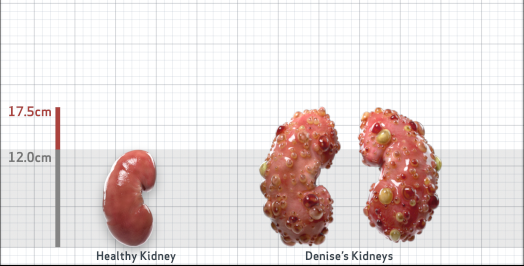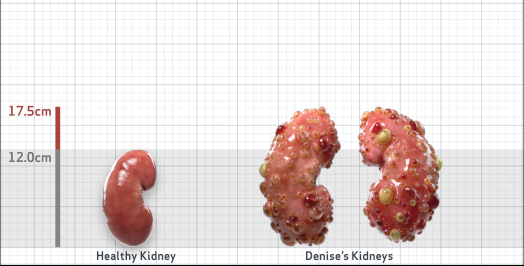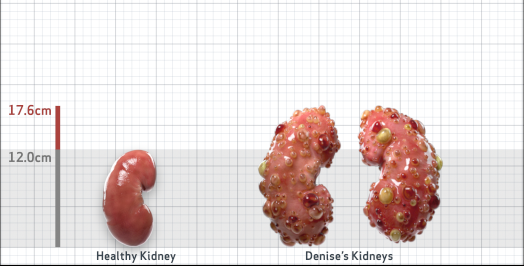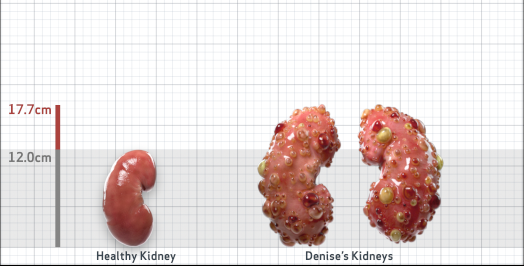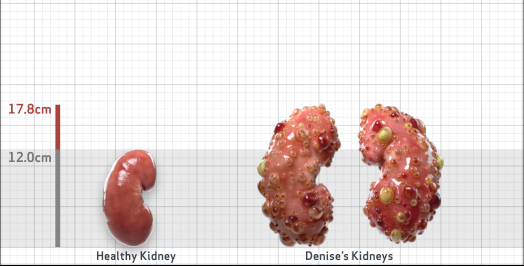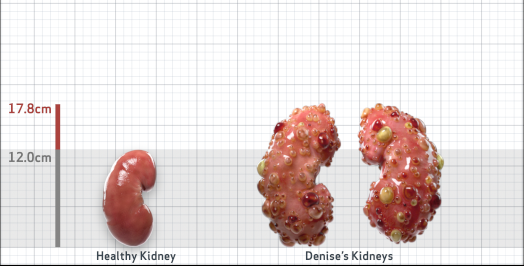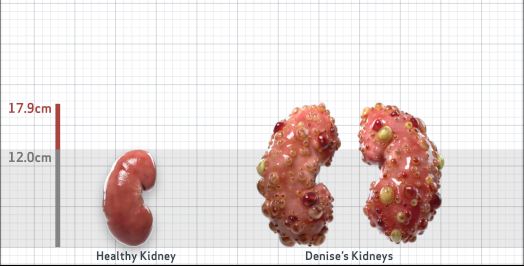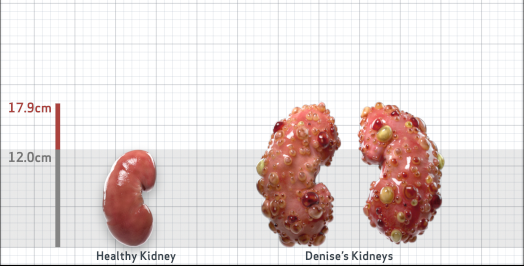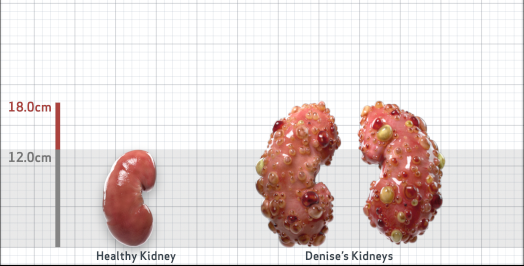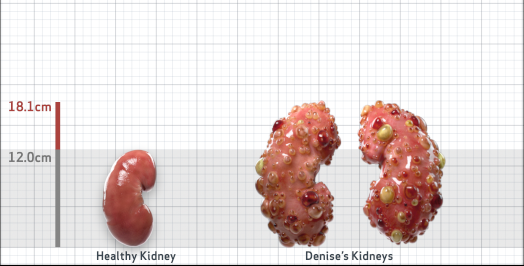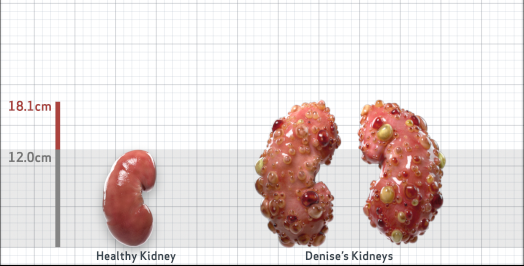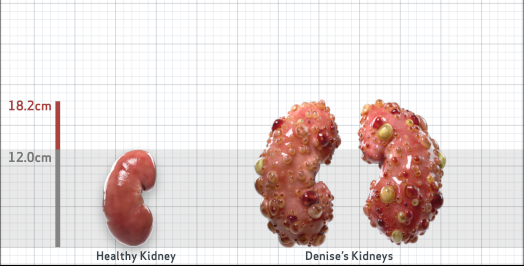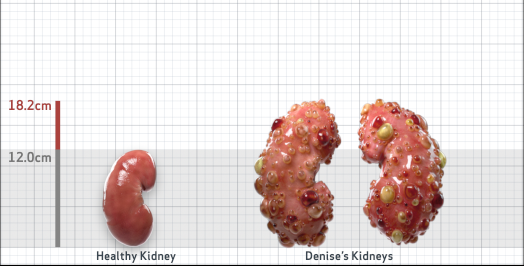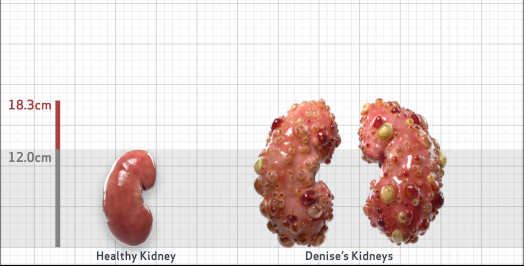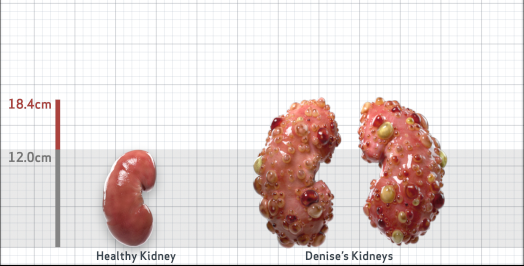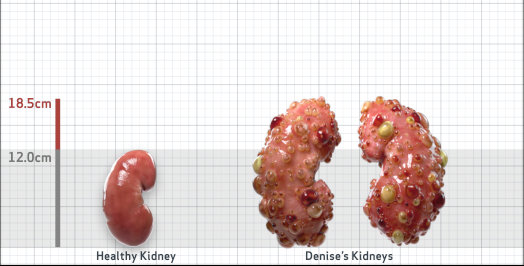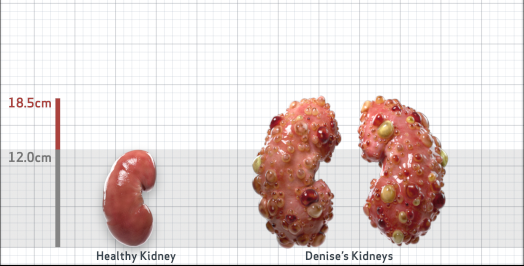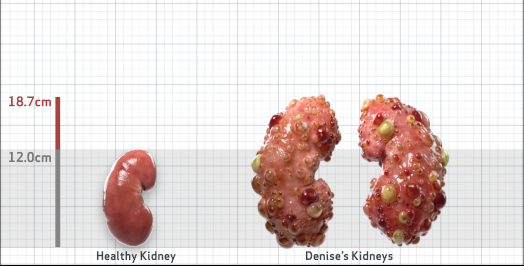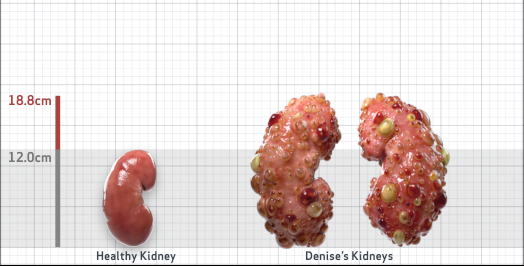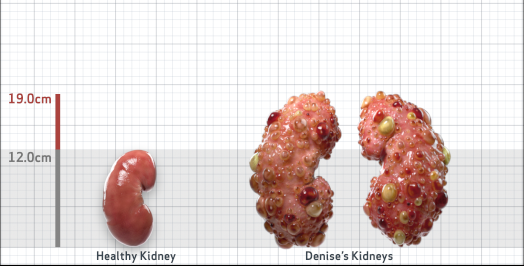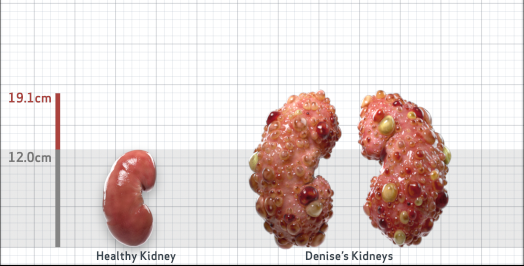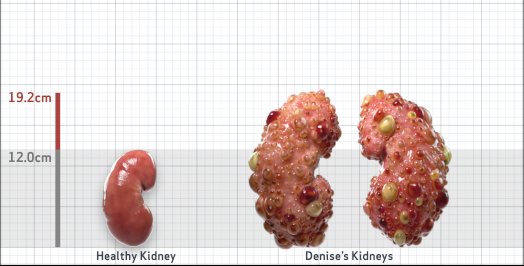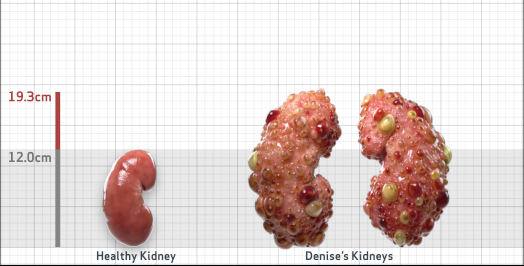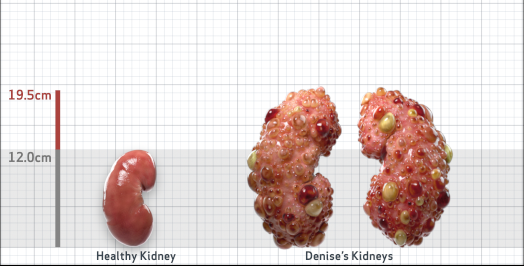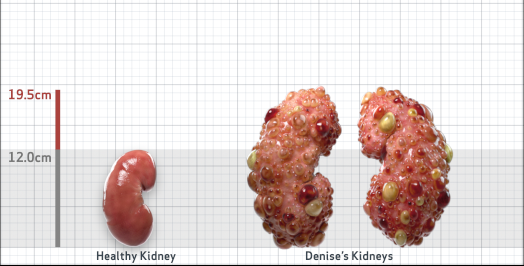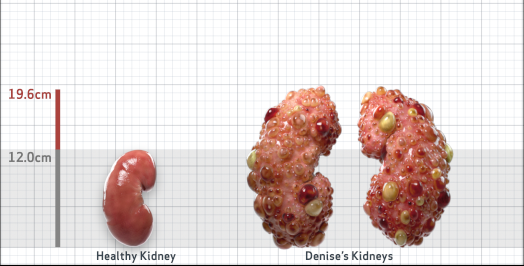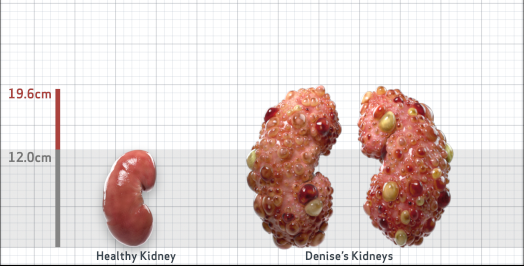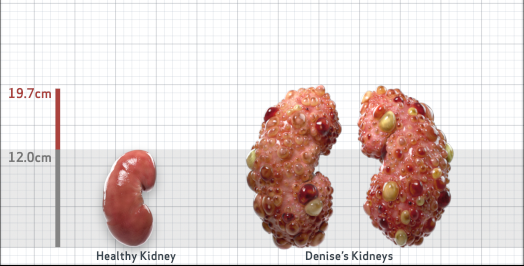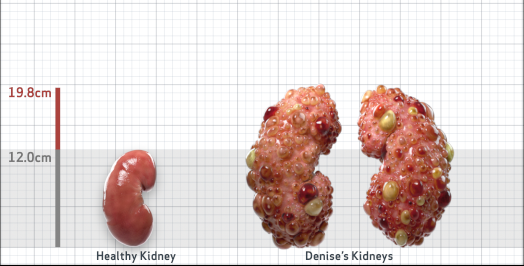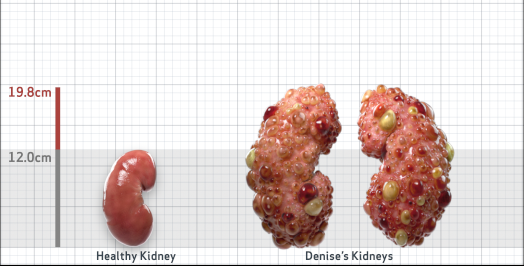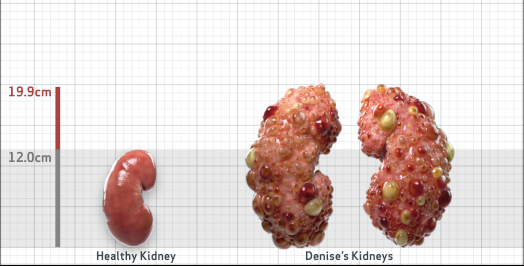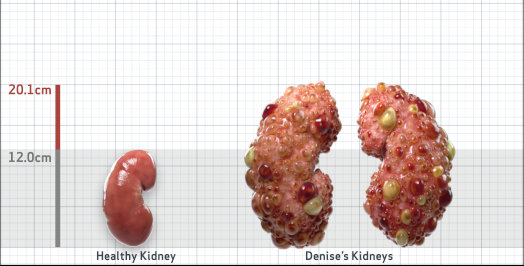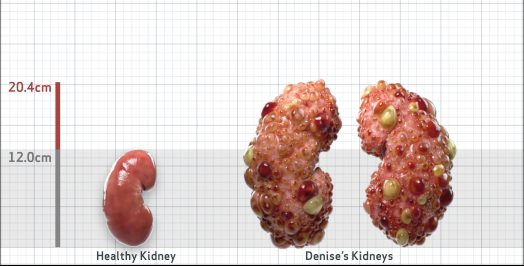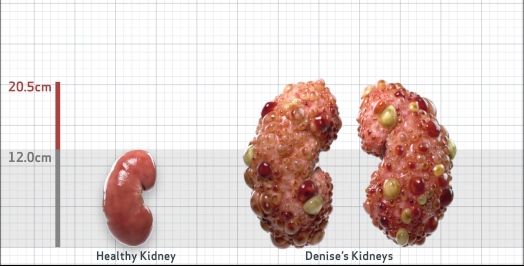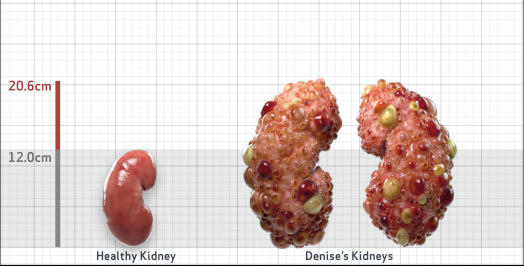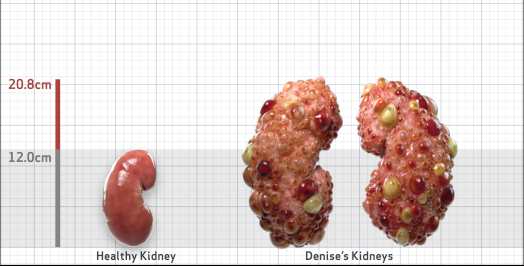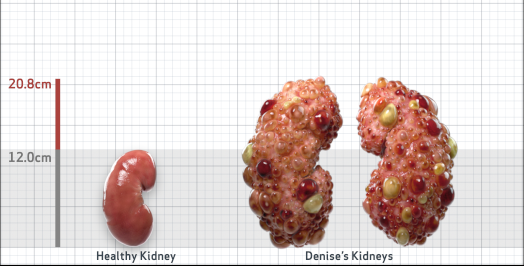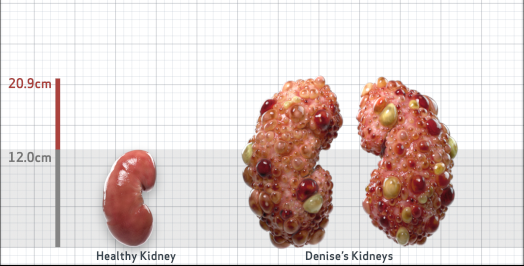
Denise
Denise is 35 years old and has been diagnosed with ADPKD by a kidney ultrasound. Denise is at risk for rapid disease progression, as indicated by the following risk factors: US-KL >16.5 cm in patients less than 45 years old*, hypertension before age 35, urologic events before age 35, overweight/obesity and family history of ESKD by age 58. Let's take a closer look with some prognostic tools to confirm the risk of rapid disease progression and assess how rapidly her disease may progress.1,2,5
- Age35
- Height5'4"
- Weight210 lbs
- SexF
- Race (AA/O)O
Baseline Assessment3-8
- Serum creatinine (mg/dL)0.85
- eGFR (mL/min/1.73m2)88.8
- Ultrasound kidney length (cm)17.2
- Hypertension before 35?Yes
- Urological event before 35?Yes
- Family members with ESKD?Yes (58 yrs)
- MutationsNot available
- PROPKD ScoreNot available
- htTKV (mL/m)Perform MRI/CT
- Other risk factorsObesity
- ADPKD Imaging Classification
Denise does not need an MRI or CT scan to confirm her risk for rapid progression, but it would provide more information.
Disease Progression2,3,6-11

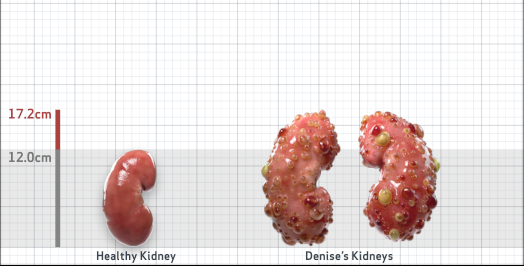
Click on the flags below to walk through an assessment that confirms risk of rapid disease progression and assesses how rapidly Denise’s disease may progress
* When rapid progression is defined as CKD stage 3 development within 8 years.5
ADPKD=autosomal dominant polycystic kidney disease; US-KL=ultrasound kidney length; ESKD=end stage kidney disease; AA=African American; O=other; eGFR=estimated glomerular filtration rate; PKD=polycystic kidney disease; htTKV=height-adjusted total kidney volume; MRI=magnetic resonance imaging; CT=computed tomography; CKD=chronic kidney disease.Schrier RW, et al. Predictors of autosomal dominant polycystic kidney disease progression. J Am Soc Nephrol. 2014;25:2399-2418.
Gansevoort RT, et al. Recommendations for the use of tolvaptan in autosomal dominant polycystic kidney disease: a position statement on behalf of the ERA-EDTA Working Groups on Inherited Kidney Disorders and European Renal Best Practice. Nephrol Dial Transplant. 2016;31(3):337-48.
Wetzels JFM, et al. Age- and gender-specific reference values of estimated GFR in caucasians: the Nijmegen biomedical study. Kidney Int. 2007;72:632-637.
Cornec-Le Gall E, et al. The PROPKD score: a new algorithm to predict renal survival in autosomal dominant polycystic kidney disease. J Am Soc Nephrol. 2016;27(3):942-951.
Bhutani H, et al. A comparison of ultrasound and magnetic resonance imaging shows that kidney length predicts chronic kidney disease in autosomal dominant polycystic kidney disease. Kidney Int. 2015;88:146-151.
Imaging classification of ADPKD: a simple model for selecting patients for clinical trials. http://www.mayo.edu/research/documents/pkd-center-adpkd-classification/doc-20094754. Accessed January 09, 2019.
Irazabal MV, et al. Imaging classification of autosomal dominant polycystic kidney disease: a simple model for selecting patients for clinical trials. J Am Soc Nephrol. 2015;26:160-172.
Cheong B, et al. Normal values for renal length and volume as measured by magnetic resonance imaging. Clin J Am Soc Nephrol. 2007;2:38-45.
Levey AS, et al. Definition and classification of chronic kidney disease: a position statement from kidney disease: improving global outcomes (KDIGO). Kidney Int. 2005;67:2089-2100.
PKD Charity. Fast Facts about ADPKD. The Polycystic Kidney Disease Charity. 2017. https://pkdcharity.org.uk/about-adpkd/just-diagnosed/fast-facts-about-adpkd Accessed January 09, 2019.
Rangan GK, et al. Autosomal dominant polycystic kidney disease: a path forward. Semin Nephrol. 2015;35(6):524-537.
